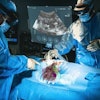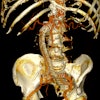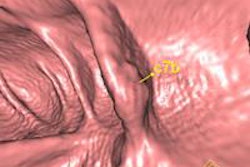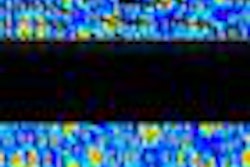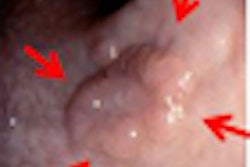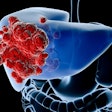At a cost of just a minute or two of extra interpretation time, computer-aided detection (CAD) software can significantly improve the performance of experienced readers in finding polyps 6 to 9 mm in size on CT colonography (CTC) studies, according to a large prospective study published online in Radiology.
In a multicenter study that included more than 600 participants, a team led by Dr. Daniele Regge of the Institute for Cancer Research and Treatment in Candiolo, Italy, found that CAD increased the sensitivity of experienced readers from 65.4% to 76.9% without significantly affecting the specificity of CTC, also known as virtual colonoscopy. Reviewing the CAD results added an average of less than two minutes to reading times.
"In this trial, we have shown that observer error is reduced by the addition of CAD," the authors wrote (Radiology, 14 November 2012).
The multicenter trial enrolled participants with clinical indications for colonoscopy at one of 10 academic centers between July 2007 and May 2009. After 33 participants were excluded, a total of 618 patients remained in the study. Of these, 464 (75.1%) had no lesions 6 mm or larger, while 52 (8.4%) had lesions 6 to 9 mm in size.
After participants received CTC and colonoscopy on the same day, one of 17 radiologists interpreted the CTC images using a sequential reading design. After an initial interpretation using a 2D primary reading mode with 3D viewing for problem-solving, they activated the CAD algorithm (CAD Colon software 1.10, im3D) in the second phase. All CAD lesion candidates were reviewed using both 2D and 3D viewing, and they were either rejected by the readers or considered to be a new identified lesion, according to the authors.
Prior to the study, all radiologists underwent a two-day, onsite training course on the use of the workstation.
Reader performance in detecting 6- to 9-mm colorectal lesions
|
While the sensitivity improvement was statistically significant (p = 0.016), the slight drop in specificity was not (p = 0.063). Reviewing the CAD candidates took an average of 1.6 additional minutes.
"Of note, all the additional 6- to 9-mm lesions detected at CAD-assisted reading were histologically verified adenomas, more than half of which were also advanced adenomas (i.e., they had high-grade dysplasia or a villous component)," the authors wrote. "This is relevant in proposing CT colonography for the diagnosis of clinically important lesions, considering that the prevalence of advanced histologic features in intermediate-size lesions is not marginal, being 32% according to the present series."
The authors noted that CAD did not improve reader sensitivity in lesions 10 mm or larger (94.1% for both unassisted and assisted reading).
|
Study disclosures Im3D, the manufacturer of the CAD software evaluated in this study, partially funded the research and contributed the CAD interpretation hardware and software free of charge. Some co-authors were employees or consultants for im3D, and one site contributed cases for development of the software and had two readers who were familiar with the software prior to initiation of the study. |


